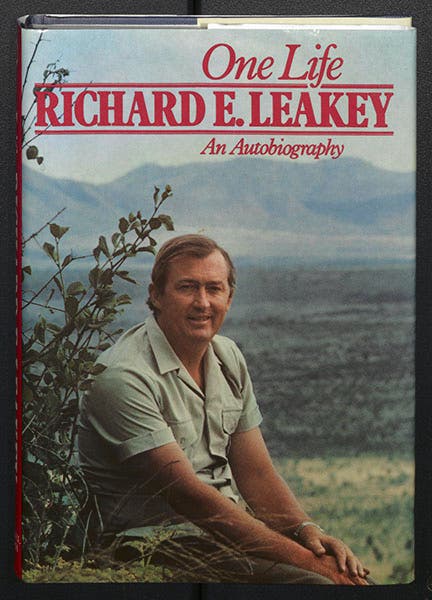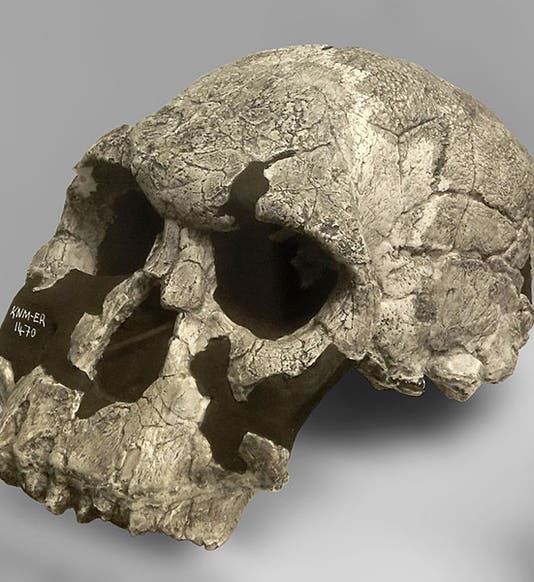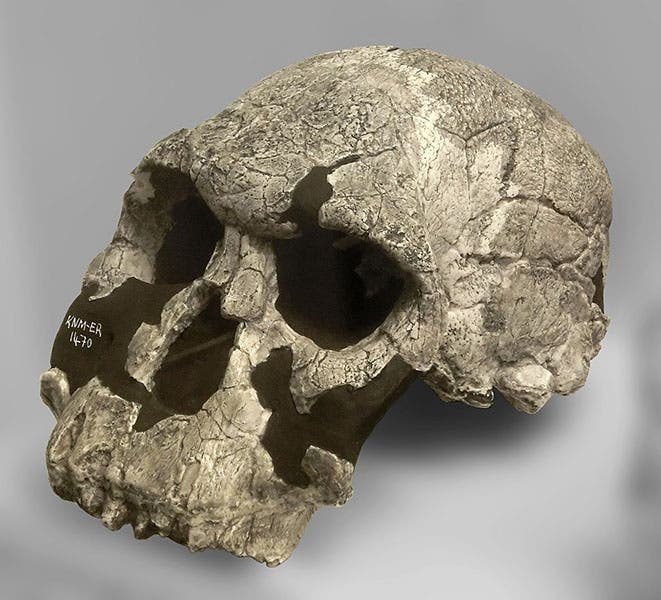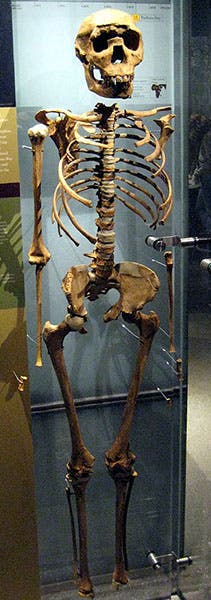Scientist of the Day - Richard Leakey
Richard Leakey, an English/African anthropologist and wildlife conservationist, was born Dec. 19, 1944, in Nairobi, Kenya. Leakey was the second son of Louis and Mary Leakey, who were not famous when Richard was born, but certainly became so in the 1960s and 1970s. I have written a post on Louis, not yet on Mary, although I did profile one of her most noted finds, the Zinjanthropus skull. Although Richard was raised in Kenya, and spent much of his early years at such sites as Rusinga Island in Lake Victoria and Olduvai Gorge in Tanzania, he initially turned away from what would have seemed a natural career in anthropology, and became a bush pilot and safari leader. He never received a university degree, or even attended a university, except to lecture when he later became famous. But it would seem that his childhood training was too powerful to reject, and by 1969 he was running his own excavations at Lake Rudolf (now Lake Turkana) on the East African rift on the border between Kenya and Ethiopia. He had spotted the site from the air – he was a frequent pilot – and he thought the area looked to be a likely location for human and/or prehuman fossils. He was right.

Dust jacket of One Life: An Autobiography, with portrait of the author, Richard Leakey, 1983 (author’s copy)
By 1972, Leakey made the first of many significant hominin finds, discovering a specimen known as KNM-ER 1470, which was a skull in fragments (first image). To be more accurate, the skull was found by Bernard Ngeneo, a local working for Leakey at the site. KNM-ER 1470 stands for: Kenya National Museum, East Rudolf, accession number 1470. It was the brainiest early hominid found to date, at least as Leakey reconstructed the skull. Initially thought to be an example of his father's Homo habilis (1964), then known only by fragments, ER 1470 is now usually considered to be a separate species, Homo rudolfensis (and oddly enough, it is the only important human fossil not to have a nickname, like Lucy or Ardi or Zinj). It had a cranial capacity of some 800 cc, compared to 600 cc for Louis’s Homo habilis, or 1300 cc for the average modern human. It lived about 2 million years ago.
In 1973, another specimen was found at Lake Rudolf, this one, unearthed by Kamoya Kimeu, an anthropologist working for Leakey (third image). KNM-ER 1813 was a well-preserved Homo habilis skull, establishing the species much better than the specimen described by Louis Leakey in 1964, which was a pastiche of several specimens and quite incomplete.
Leakey's most spectacular find was probably the Turkana boy, unearthed by Kimeu in August of 1984, which is a virtually complete skeleton of Homo ergaster, and who lived about 1.6 million years ago and was a predecessor to Homo erectus. This one has the designator KNM-WT 15000 (yes, WT means the west shore of Lake Turkana, as Lake Rudolf was now called). It is sometimes also referred to as the Nariokotome boy. It is the most complete early human ever found, with 90% of the bones present (fourth image).
The original specimens of all three hominin fossils mentioned here are in the Nairobi National Museum, as it is now called. They are valuable beyond measure and rarely leave their vault. Fortunately, nearly every major natural history museum has high quality replicas on display – even the Nairobi Museum displays replicas. Since it is hard to find photos of the original, the ones we show here are replicas. Even the one that claims to be a photo of the original in Nairobi is probably a photo of a cast.
Leakey retired from anthropological work in the late 1980s and became very involved in the politics of Kenya, working hard to institute conservation methods and combat poaching. He was for some years chairman of the Kenya Wildlife Service, which put such reforms into practice quite successfully, but Leakey’s unwillingness to compromise and his incorruptible nature led eventually to his removal. So he moved into the wider political arena in Kenya. In 1993, he lost both lower legs in an airplane crash, possibly the result of sabotage for his anti-poaching activities, but he was soon ambulatory again on artificial limbs and was active until his death. While recovering from a kidney transplant in the early 1980s, he wrote an autobiography, One Life, which is fascinating reading, particularly about childhood as an English school boy in Africa (second image). So far as I know, he never completed the story of his life, before he died on Jan. 2 of last year, at the age of 77.
Leakey’s wife Meave, and his daughter Louise, carry on the Leakey family tradition in the pursuit of human origins in Africa. Both are affiliated with the Turkana Basin Institute, founded by Richard in association with Stony Brook University on Long Island.
William B. Ashworth, Jr., Consultant for the History of Science, Linda Hall Library and Associate Professor emeritus, Department of History, University of Missouri-Kansas City. Comments or corrections are welcome; please direct to ashworthw@umkc.edu.









